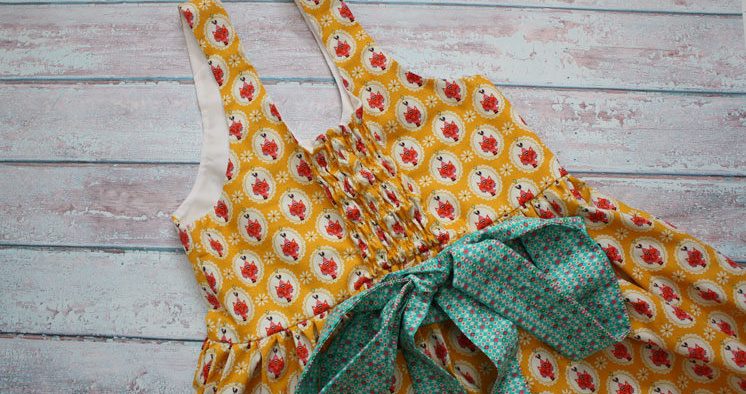How To Add Stretch Panels To Your Clothes
Share

Clothes that feel restrictive can quickly turn a fun fashion statement into a frustrating wardrobe choice. When it comes to ensuring comfort and mobility without sacrificing style, adding stretch panels to your clothes can be a game-changer. Whether you want to breathe new life into an old favorite or customize a new purchase, knowing how to incorporate stretch panels is a skill worth mastering. In this article, we’ll explore the art of adding stretch panels to your clothes, giving you the tools you need to create pieces that fit and move with you effortlessly.

Choosing the Right Fabric for Stretch Panels
When adding stretch panels to your clothes, choosing the right fabric is essential to ensure both comfort and flexibility in your garment. The fabric you select will determine how well the stretch panels will work with the rest of the garment and how they will feel against your skin.
Consider the following fabrics for stretch panels:
- Spandex: Known for its exceptional elasticity and stretchiness, spandex is a popular choice for stretch panels in activewear and workout clothes.
- Lycra: Similar to spandex, lycra is another versatile fabric that provides excellent stretch and recovery, making it ideal for stretch panels in leggings and other form-fitting garments.
- Jersey: A soft and comfortable fabric that offers good stretch, jersey is a great option for stretch panels in tops and dresses, providing both flexibility and ease of movement.
- Neoprene: A thicker fabric that offers moderate stretch, neoprene is commonly used for stretch panels in outerwear and sportswear, providing both warmth and flexibility.
When , make sure to consider the desired level of stretch, the intended use of the garment, and the overall aesthetic you want to achieve. By selecting the right fabric, you can create garments that not only look stylish but also feel comfortable and functional.
Tips for Designing and Placement of Stretch Panels
One of the key aspects of designing clothing with stretch panels is to ensure that they enhance both the aesthetic appeal and functionality of the garment. When incorporating stretch panels into your designs, it is important to consider the following tips:
- Choose high-quality stretch fabric that complements the main fabric of the garment.
- Placement of stretch panels should be strategic, focusing on areas where flexibility and movement are essential.
- Experiment with different shapes and sizes of stretch panels to create visually interesting designs.
- Ensure that the stretch panels are securely attached to the main fabric to prevent any potential damage during wear and washing.
In terms of placement, consider incorporating stretch panels in the following areas to maximize comfort and mobility:
By following these tips and considering creative placement ideas, you can successfully add stretch panels to your clothing designs to enhance both style and functionality.
Sewing Techniques for Adding Stretch Panels
Adding stretch panels to your clothes can be a game-changer when it comes to comfort and flexibility. By incorporating stretchy fabrics into your garments, you can create clothing that moves with your body and provides a more flattering fit.
There are several sewing techniques you can use to add stretch panels to your clothes:
- Inserting Side Panels: Cut out panels of stretch fabric and sew them into the sides of your garment for added stretch and movement.
- Adding Waistbands: Create a waistband using stretch fabric to ensure a comfortable and snug fit around the waist.
- Using Stretchy Seam Allowances: Opt for using stretchy seam allowances when sewing your garment together to allow for more flexibility.
Experiment with different sewing techniques to find the best method for adding stretch panels to your clothes. Whether you’re making a pair of pants, a skirt, or a top, incorporating stretchy fabrics can elevate the comfort and wearability of your garments.
Additional Tips for Maintaining the Flexibility and Fit of Stretch Panels
To maintain the flexibility and fit of stretch panels in your clothes, consider the following tips:
- Avoid harsh chemicals: When washing your clothing with stretch panels, opt for gentler detergents to prevent damage to the fabric.
- Air dry: Instead of using a dryer, air dry your clothes with stretch panels to prevent the fabric from becoming misshapen or losing its elasticity.
- Avoid excessive heat: High heat can cause the stretch panels to lose their elasticity, so be cautious when ironing or drying your clothes.
- Store properly: To prevent stretching or misshaping, store clothes with stretch panels flat or hung up instead of folding them.
For additional care, consider using a fabric conditioner specifically designed for stretch fabrics to maintain the flexibility and fit of the stretch panels in your clothing. By following these tips, you can ensure that your clothes with stretch panels remain comfortable and stylish for longer periods.
Incorporating stretch panels into your clothing can truly elevate both style and comfort. With just a few simple steps, you can create customized pieces that not only fit better but also move with your body. Whether you’re adding stretch panels to an existing garment or designing a new piece from scratch, the possibilities are endless. So go ahead, get creative and start experimenting with stretch panels today!





